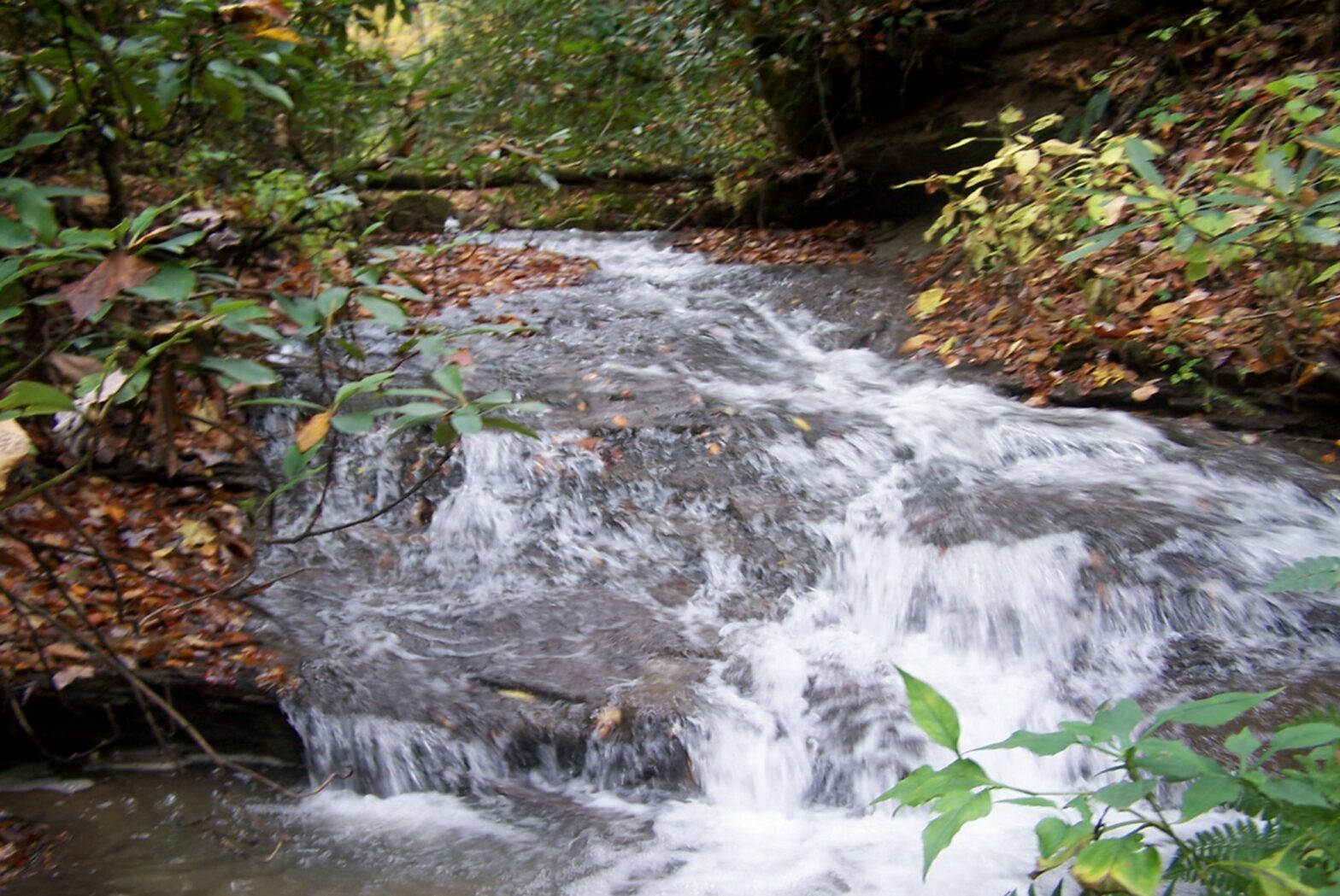Macroinvertebrate Collection and Analysis | Aquatic Assessments – The following steps are taken from the KDOW SOP manual, and describe the methodology for collecting a multi-habitat sample in a wadeable stream:
“1. The investigator will sample a variety of non-riffle habitats with the aid of an 800 x
900 μm mesh triangular or D-frame dip net.
2. Each habitat will be sampled in at least three (3) replicates.
3. After all habitats have been sampled, the contents of the mesh wash bucket will be
composited into a glass, sampling jar with 95% ETOH.
4. The wash bucket will be picked clean of any remaining macroinvertebrates.
5. The sample jar will be labeled with appropriate information (Section 8.D.) and will be
ready for transport to the lab for analysis.
6. Each of these following habitats will be sampled:
A. Undercut Banks/Root Mats
1. These are sampled by placing a large root wad into a triangular or D-frame dip
net and shaking vigorously.
2. The contents are removed from the dip net and placed into a mesh wash bucket.
3. If undercut banks are present in both run and pool areas, each is sampled
separately with three (3) replicates.
B. Marginal Emergent Vegetation (exclusive of water willow, Justicia Americana, beds)
1. This habitat is sampled by thrusting (i.e., “jabbing”) the dip net into the
vegetation for approximately 1m, and then sweeping through the area to collect
dislodged organisms.
2. Material is then rinsed in the wash bucket and any sticks, leaves and vegetation
are thoroughly washed and inspected before discarding.
C. Bedrock or Slab-Rock Habitats
1. These habitats are sampled by placing the edge of the dip net flush on the
substrate, and disturbing approximately 0.1 m2 of area to dislodge attached
organisms.
2. Material is emptied into a wash bucket, rinsed, inspected for organisms, and
discarded.
D. Justicia americana (water willow) Beds
1. These are sampled by working the net through a 1m section in a jabbing
motion.
2. The material is then emptied into a wash bucket and any J. americana stems
are thoroughly washed, inspected and discarded.
E. Leaf Packs
1. Leaf packs are preferably collected from “conditioned” (i.e., not new-fall
material) material when possible.
2. Samples are taken from a diversity of habitats (i.e., riffles, runs and pools) and
placed into the wash bucket.
3. The material is thoroughly rinsed to dislodge organisms, inspected and
discarded.
F. Silt, Sand, and Fine Gravel
1. A U.S. No. 10 sieve is used to sort larger invertebrates (e.g., mussels,
burrowing mayflies, dragonfly larvae) from silt, sand and fine gravel by scooping
the substrate to an approximate depth of 5cm.
2. A variety of collection sites are sampled in order to obtain three (3) replicates
in each substrate type where available (silt, sand and fine gravel).
G. Aufwuchs Sample
1. Small invertebrates associated with this habitat are obtained by washing a small
amount of rocks, sticks, leaves, filamentous algae and moss into a medium-sizedbucket half filled with water.
2. The material is then elutriated and sieved with the nitex sampler/mesh.
H. Rock Picking
1. Benthic macroinvertebrates are picked from 15 rocks (large cobble/small
boulders; 5 each from riffle, run and pool).
2. Selected rocks are washed in a bucket half filled with water and then carefully
inspected to remove organisms.
I. Wood Sample
1. Pieces of submerged wood, ranging from roughly 3 to 6 meters (10 to 20 linear
feet) in length and ranging from 5–15 cm (2–6 inches) in diameter, are
individually rinsed into the wash bucket.
2. Pieces of wood are inspected for burrowers and crevice dwellers and are
removed with fine-tipped forceps.
3. Large diameter, well-aged logs should be inspected and handpicked with finetipped
forceps.”
After the samples have been processed our aquatic entomologists identify each organism and provide an analysis of the results.
To read more about our macroinvertebrate samples see here. If you would like to discuss your project or have questions contact us or request a quote.




